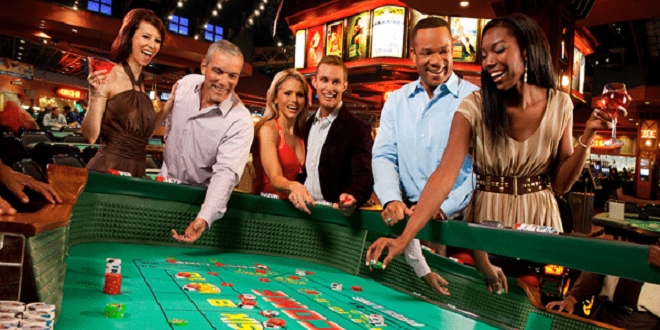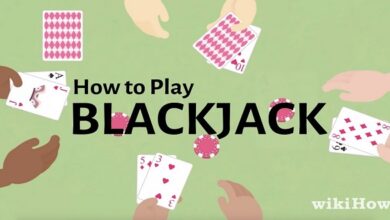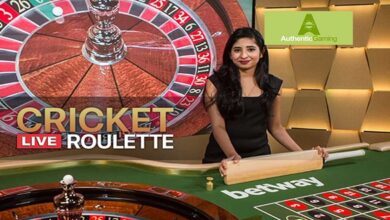Rolling the Dice: Craps

Setting the Craps Stage
Craps is like no other casino game. The sheer variety of bets means that you and other players at the same table may all be playing different games. A single dice roll may mean a win to you, a loss to another player, and absolutely nothing to a third. Before you can start making your bets, you need to know how to play craps. This section looks at the game’s objective and its important props and characters. I also have a short section on how to properly behave at a craps table
Casting the dice
The dice are the heart and soul of the craps game. No doubt, you know a die (the singular form of dice) when you see it: that six-sided cube, one to six dots (or pips) marking each face. In the game of craps, the objective is to bet on the outcome of the roll. So you can help yourself by understanding the various combinations of dice throws. Take a look at Figure 8-1. A pair of dice has 36 possible ways to land on a given throw, which means that you have a 1-in-36 chance of rolling any single combination. But for the most part, the dice total is what matters in craps. A 7 is still a 7, whether the dice come up 5 and 2, 6 and 1, or 3 and 4. Because some totals have multiple combinations, certain rolls are more likely than others.
Surveying the lay of the table
Before you can start to play craps, you need to know the landscape. You play craps on a long, narrow, felt-covered table (see Figure 8-2) that has a foot-high ridge running all the way around, making it the perfect mini-arena for tossing dice — or racing hamsters. The standard craps table is large in order to accommodate up to 14 players at a time. Craps is a stand-up game — no chairs for you or the other players. At the top of the ridge is the rail with two grooves (the rail rack) perfectly sized to hold casino chips? But make sure you keep your drinks, purse, cigarettes, and everything else off the rail. A built-in shelf at your knees keeps your personal items safely out of the way of the game
Getting to know the craps crew
Getting to know the craps crew before you start to play, you need to understand who’s who at a craps table. The following four people man a standard craps table. They’re listed according to how much you interact with them during a session at the craps table.
Shooting for the whole table
The shooter is a key character in craps because she’s the player who’s rolling the dice. In craps, shooting, or dice rolling, is a rotating affair. Each player gets a turn to roll for the entire table, and the honor moves clockwise around the table. When your turn comes around, the stickman pushes five dice toward you, and you select two. The only requirement to shoot is that you have a bet riding. If you’re a craps newbie, you can refuse your turn to roll the dice.
But I recommend you give it a try. Shooting is part of the experience of craps. Even if your first roll goes completely off the table or lands in someone’s drink, pocket, sleeve, mouth, or cleavage, the game continues, and nobody gets too upset. The stickman (when he’s done laughing at you) calls, “No roll.” Then the boxman inspects the errant die and gives you another shot at getting it right.
Walking through Craps, Step by Step
Craps is definitely a luck-based game, but estimating the odds successfully does require some homework so you understand the chances of rolling certain number combinations. The good news is that your odds of coming out ahead of the house are some of the best in the casino if you stick to the basic bets (despite the numerous fancy bets available). Before you decide to join the game, make sure you’ve read the previous section, “Setting the Craps Stage,” for the lowdown on a craps table layout and the important members of the cast and crew
Coming out (no, not of the closet): The first roll in craps
Before the game starts, most players at the table place line bets, which means they put money on the pass line or the don’t pass (see “Relying on Strategy to Place the Best Bets,” later in this section, to understand what these actual bets mean). The action begins when the stickman pushes five dice to the shooter, who selects two for the throw. The shooter tosses the dice to the opposite end of the craps table for the come-out roll, the first step in the game sequence. Although this throw looks like any other, certain rules apply for come-out rolls that are different from subsequent rolls.
Summary
Some proposition bets indicate the bet pays 30 to 1, while another table layout may state the payoff odds as 30 for 1. Be careful because these two types of bets are different. A bet that is 30 to 1 is paying 30 times the bet — but a bet offering 30 for 1 pays 29 times the bet. Although for seems like an innocent little word, don’t let semantics fool you into thinking a bet pays more than it really does! The smartest and simplest strategy is to ignore all bets in the center of the table


